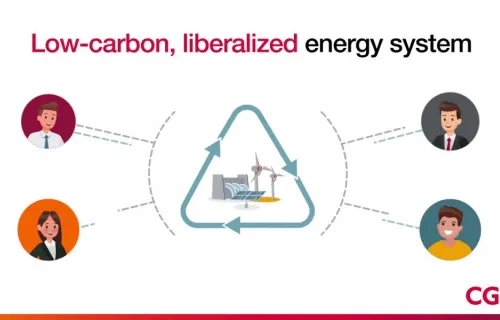For more than three decades, I served at a leading electric utility, responding to numerous storms to keep the lights on for customers and to support critical infrastructure. We had many sleepless nights during restoration efforts for Atlantic Hurricanes Isabel, Wilma, Irene and Sandy. These experiences have made me reflect on how challenging such efforts would be during a pandemic.
Given this outbreak will extend for some time, and that it’s only a matter of time for severe weather to occur, I can’t imagine what my former colleagues are going through right now. I thank them for their tireless service to ensure a reliable energy supply for all of us.
COVID-19 considerations and how technology can help
While utilities are accustomed to managing crises, COVID-19 brings new challenges. Planning during a pandemic is unique because it requires operating with a smaller workforce and potentially limited support services for an extended period.
In this blog, I explore five key areas for utilities to consider under these circumstances, and suggest ways technology can help.
1 - Preventative measures
The primary consideration for utilities right now is protecting the safety, health and well-being of its workforce by taking necessary precautions to minimize exposure. This includes:
- Continuously educate employees about COVID-19 health and safety information
- Increase awareness of handwashing, social distancing and other hygiene measures
- Enhance sanitation at facilities, including decontamination and remediation if necessary
- Institute additional personal protective equipment protocol
How technology can help: For regulated utilities, pandemic-related costs could warrant recovery funds from regulatory bodies. The right technology can help utilities capture and track the cost of these measures to assist in regulatory cost recovery efforts when they are defined.
2 - Situational awareness
Utilities need to maintain situational awareness through communications and dashboards of the critical data that informs all of these considerations. This includes:
- Employee and workforce status monitoring
- COVID-19 infection rates within the service area
- Public health emergency declarations in the service area
- Governmental and regulatory guidelines and restrictions
How technology can help: An event intelligence application can detect and predict COVID-19 conditions that affect a service territory, allowing utilities to plan the appropriate protection and safety measures. The application should provide utility stakeholders with the reports, maps, alerts and analytics they need to activate governance policies that mitigate impacts to customers and employees.
3 - Work and staffing modifications
Utilities are modifying work and staffing practices to ensure reliable service to customers and to minimize risk to employees and operations. Key actions include:
- Identify critical control center personnel and the necessary sequestration, combined with working in smaller teams
- Stagger starting times with overlapping shifts and locations for field crews
- Rotate coverage with a pre-determined percentage of line workers on paid bench time in order to reduce risk exposure
- Put a moratorium on disconnections and late charges
- Reprioritize work to minimize outages and provide additional inspections for equipment serving hospitals and other critical service facilities
- Suspend various types of non-critical repair and compliance work on equipment to limit customer exposure
How technology can help: An effective workforce management solution can help utilities optimize resources and schedules and communicate changes in real time. This can help reduce the impact on operational efficiency and provide a contactless communication channel to the field. Additionally, an effective cost recovery solution can help utilities capture the cost of work and staffing modifications to assist with regulatory cost recovery efforts.
4 - Emergency response
At a time when customers need service more than ever, utilities are focused on maintaining service levels while improving emergency response capabilities and infrastructure reliability. Key actions include:
- Prepare, modify and drill storm and emergency plans prior to unexpected events to ensure restoration can be managed under new conditions
- Process and stage external resources
- Arrange lodging and meals for rescue workers and utility staff
How technology can help: As part of their efforts to rethink disaster response approaches to mitigate pandemic risk, utilities should explore a central technology platform for managing all aspects of disaster events, such as resources, logistics, financials, work and situation management. Such a platform also should enable mobile access to pertinent information and support crew coordination and contactless onboarding, while eliminating paper-based communication.
5 - Cost tracking and recovery
Local government mandates to suspend service disconnects, combined with altered power flow patterns due to closed businesses, will have significant revenue impacts for regulated utilities. While regulators in most countries have yet to define parameters for potential cost recovery, utilities must be able to report accurately the financial impacts. Key actions include:
- Capture and track all costs incurred related to COVID-19
- Monitor, identify and institute regulators’ cost recovery guidance and parameters
- Ascertain the cost and recovery impact of COVID-19 and plans to mitigate
How technology can help: Utilities need to effectively mine and allocate data to assist with the regulatory cost recovery effort. A cost recovery tracking solution should provide a dashboard of key data summarized for each stakeholder group, such as the example below developed by CGI on the Salesforce platform, and include data on revenue loss by operating territory, resource and logistics costs, local mandates, voluntary actions, etc. Such data also can inform plans for rapid execution of future scenarios.
Sample Cost Recovery Tracking Dashboard for Utilities
Helping utilities reinvent ways of working
Utilities are always under intense pressure to ensure the reliability of the service they provide. Customer and regulator expectations and scrutiny continue to increase, while reliance on electricity is greater than ever, especially given the pandemic crisis.
At CGI, we have partnered with utilities for more than 30 years to meet complex challenges with technology and thought leadership. We are ready to assist with new COVID-19 considerations through capabilities such as the cost tracking and recovery, crisis response and storm restoration management applications in our CGI OpenGrid360 solution suite. I hope you will contact me to learn more.





